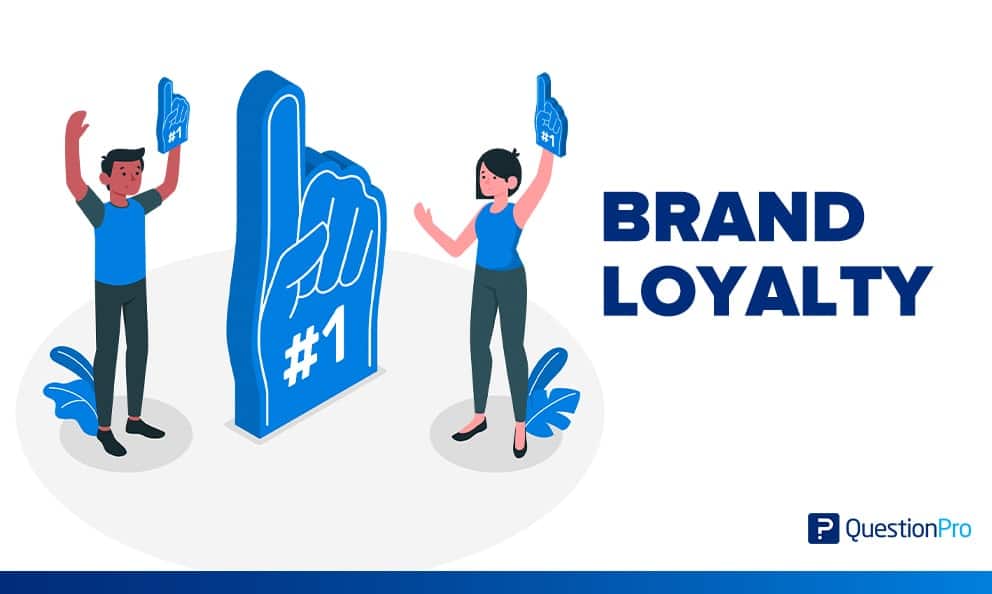 Reading Time: 4 minutes read
Reading Time: 4 minutes readWhen it comes to brand loyalty, most organizations swing wildly between extremes. Some believe their brand keeps company with the likes of Apple and Coca-Cola, while others can do nothing more than wring their hands in pure envy of the same. Most of us fall somewhere in between, and we probably should.
One thing is true for all of us: we hardly ever give our brand the attention it deserves. Today we’ll learn everything about what brand loyalty is with free examples.
What is Brand Loyalty?
Brand loyalty is what a company gets when their clients repeat the purchase of a product or service because of its value and added value, this comes from the trust the company provides them and the way the clients are able to bond with the company. But, what does brand loyalty mean?
Brand loyalty is the outcome of so many variables —some of which we can control, and others we cannot—, and understanding how those variables play out in our markets is a crucial first step to understanding what causes brand loyalty.
When customer satisfaction is high, the added value will turn the consumer into a brand ambassador for your company. The brands that gain the most loyalty are the ones that have influence over their clients’ lives.
LEARN ABOUT: Brand health
Keep learning! You might be interested in the following article: What is a Customer Journey?
Realities to face with Brand Loyalty
There are many ways to get more serious about building brand loyalty. But before doing so, we need to get real about these ugly truths.
1. Your assumptions are wrong.
Brand loyalty is too important to leave to guess-work. So many organizations rely on their gut, or they put too much faith in the misguided thinking of well-intended marketing teams and external consultants. The problem with it, though, is that rarely is any of it actually backed by data.
Few organizations actually take advantage of the digital age of brand analytics; few organizations survey, measure brand, track, or analyze what’s happening with a brand; few pay attention to the signals and trends on any regular basis, and few organizations actually use data…real data…to take meaningful action in managing their brand.
2. You can’t wing it.
Your brand – and your customers’ loyalty to it – will, in fact, evolve on its own. But it will likely evolve into something you neither want or need it to be. You need to invest – time, energy, resources, and tools (e.g surveys) – in your brand just as you do with any other important operating system in your business. Most companies spend more on coffee for their employees in any given year than they do on brand management.
3. Your brand is not your logo.
Logos are important. Design, image, identity are all important aspects of brand. But they are in no way the end all to be all. Brand is more about experience than anything. It’s about emotion – what your customers get out of interacting with you and your products/services. If your brand isn’t evoking an emotional response, it’s nothing more than a logo on the webpage. And anyone can have one of those.
4. Brands are fickle.
In a world that changes with the latest headline and bombshell tweet, your brand does not have the staying power it used to. It needs to be nurtured, revisited, refined. Customers are by default much less loyal than they’ve ever been – and a lot of that has to do simply with how many options they have. Access to brands far and wide is at our fingertips. If you don’t understand what’s happening with your brand and the market around it, you won’t be able to keep up.
5. Your brand cannot fake it.
Consumers are increasingly discerning. They know how to cut through the crap and get to the facts. They have resources, they research, they read. They can access public reviews about pretty much any product out there. It doesn’t matter how strong you think your brand is; it is one lie or mistake from destruction. Authenticity matters more and more. Your brand must walk your talk.
So what do we do about all of this? This is a loaded challenge…one which there is no one secret recipe or fix. So just start. Take that first step. We say start with a survey.
How to earn Brand Loyalty?
There are some great tools, templates, easily accessible science (e.g. Likert Scale, MaxDiff, etc.), and technologies out there, and most of them you can get up and running in a heartbeat. And you can do it yourself – with very little investment on your part. It doesn’t have to be long, it doesn’t have to complex.
It just needs to ask some simple questions about how your audience – current customers and prospective customers – feels about your brand. What do they experience? If you can start gathering some of these insights, you’ll keep gathering the insights. Then you’ll start doing something with them – and that’s far more than most are doing.
Want to learn more about how we do brand loyalty surveys?





















